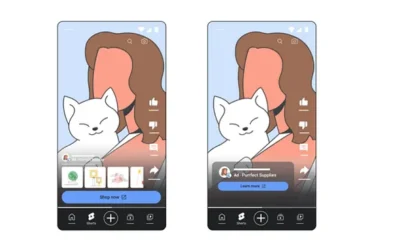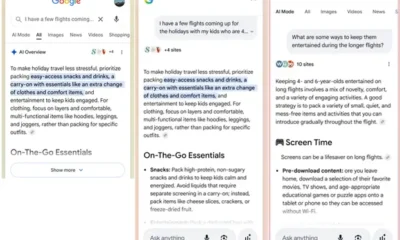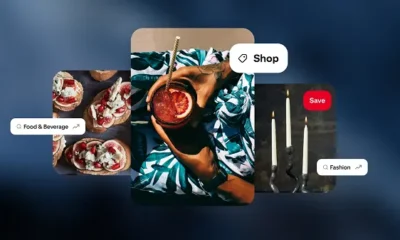How much do we shape-shift across social media?

Like the spaces we frequent in the physical world, each social app serves a different, fairly obvious purpose. If LinkedIn is a job fair of some sort, Instagram is a playground, or a party — both of which can be simultaneously bright, loud, and exhausting. The distinctions between these platforms are very much known.
But these are places we go to everyday, and in each, we shift. We flick through a handful apps everyday, the more prominent ones arguably being TikTok, Twitter, WhatsApp, Facebook, Instagram, and LinkedIn. On some, our tone may be nonchalant; on another, indignant. These are emotions expressed daily, sometimes concurrently, with different interfaces displaying alternative views, moods, even personas.
Tweet may have been deleted
(opens in a new tab)
(Opens in a new window)
How much do we actually do shape-shift across social media? Turns out, a lot.
Samara Madhvani, who owns a boutique social media consultancy(Opens in a new window), says that what she shares on TikTok is vastly different from her posts on Instagram.
“Most of my friends don’t use [TikTok], so I feel like I can post more freely without being judged,” she tells Mashable. “It’s a great space to experiment with different kinds of content, that I would probably never share on Instagram.”
Similarly, brand management and development specialist MaryKate tells Mashable that she shows her “full authentic self” solely on Snapchat.
“Snapchat is for [my] innermost thoughts,” she says. Meanwhile, she uses Instagram to post “photos of things, travel and the occasional selfie”. TikTok is for more niche interests, where she posts “drone footage or animal footage”. Twitter is a point of conflict, where she feels more filtered.
“I feel like each social media platform is a different part of me,” she says.
At their core, these apps are intending for users to be on display, in whatever curated form they desire. Apps like BeReal have attempted to offer a different side to social media, with the premise that users can be their most authentic selves. Yet, it’s another platform that is, in reality, asking something of the user: who are you in this moment? What do you and to show?
“When you look at our behaviour on social media as a whole, our personality on a platform depends on how we perceive its usage.”
Ria Chopra(Opens in a new window), a writer and journalist, says that she is guarded about her personal life and selective when it comes to posting across all platforms.
“The sides of my personality I choose to show differ from platform to platform,” she says. “When you look at our behaviour on social media as a whole, our personality on a platform depends on how we perceive its usage. LinkedIn is perceived by me to be a professional space, so I’m professional there. Instagram is for personal connections, so I’m more likely to put up birthday posts there, while Twitter is more stream-of-consciousness, simply because of that’s the kind of stuff I see there and believe it’s for.”
Tweet may have been deleted
(opens in a new tab)
(Opens in a new window)
Being human means having to change, situationally and socially, on the daily. This isn’t news to any adult. Who you are at work may be a far cry from who you are at home. What you show to your closest friends can be deviation from who are you with your siblings. For Black people and people of color, code switching is even more habitual(Opens in a new window), particularly in the workplace where bias based on factors like speech(Opens in a new window) has long had a negative impact. These ever-so-subtle shifts that take place are near instinctive for most. But when this applies to the internet, too, identity can be in constant flux.
For many users, this is a natural aspect to having more than one social media account. It’s almost a given: an exercise in construction and curation(Opens in a new window), for numerous reasons.
Being a woman or a marginalized person on social media comes with its own set of complications, for instance. These are ones that can largely hinder what a person chooses to share and speak about on public platforms. Seyi Akiwowo(Opens in a new window), author of How to Stay Safe Online(Opens in a new window), addressed this extensively in her guidebook to the internet. “The idea that online platforms are neutral is a fairy tale. It’s not a few bad apples ruining the experience for the rest of us. The very DNA of these platforms is in conflict with the best interests of a large number of their users,” Akiwowo writes. “Women and girls across the globe are walking on eggshells because of the fear of online abuse.”
Research by Plan International in 2017(Opens in a new window), which Akiwowo cites, found that 43 percent of girls aged 11 to 18 admitted to holding back their opinions on social media for fear of being criticized. Self-censorship, while admittedly an issue for all on social apps, is heightened when it comes to young girls who are doing so for their own safety online.
“Women can post on almost any topic — animal rights, climate change, healthcare — and abuse usually follows,” writes Akiwowo.
Then there are the lesser but significant factors everyone faces – like who your followers are and whether your account is private. These will also play a natural role in choosing how to behave on a certain platform. This is perhaps what led to the surge of “finstas” — which now seem near extinct — a few years ago. These “fake” Instagram accounts allowed for privacy and exclusivity, but are now a dated concept, shadowed by integrated features like Instagram’s Close Friends and Twitter Circle. The demand for these also alludes to the greater desire to post and interact in different ways, even in the space of a singular app.
Madhvani believes that total, complete authenticity is a far reach on any platform. “Even a comment or a like on someone else’s content will leave a digital footprint,” she says. “Today, everything that people post is somewhat curated. At the end of the day, you’re posting and sharing for a purpose whether it’s to look a certain way or to get more followers or even sell a product.”
Tweet may have been deleted
(opens in a new tab)
(Opens in a new window)
Alex Quicho, head of futures at trends agency Canvas8(Opens in a new window), suggests there is a positive side to the transformations we undergo on apps, saying that social media can play a role in “trying out different facets of one’s persona”.
“Today’s crop of users are less concerned about projecting a stable image or personal brand,” says Quicho. “We’re seeing many Gen Zers adopt an exploratory attitude to how they appear on social platforms: seeing these false personas as creative and constructive.”
In this vein, having different sorts of social media can provide paths to traverse identity and to explore different interests. The possible trouble is not in utilizing these purpose-driven platforms. Instead, there is potential for burnout in these spaces(Opens in a new window), which is already a dangling possibility(Opens in a new window) for anyone who uses social media.
Tweet may have been deleted
(opens in a new tab)
(Opens in a new window)
Chopra says that she is increasingly “cross-posting” across platforms, in an endeavor to integrate content and show her comprehensive self.
“It’s unconscious, but maybe that’s my bid to be more ‘me’ everywhere. So I’ve posted my tweets on LinkedIn, my Instagram posts on Twitter, if I want to. And it’s paying off — I feel more authentic knowing that I’m reflecting a more holistic sense of my personality everywhere,” she explains.
Let’s face it: authenticity and social media are hardly interconnected. Some social media users are increasingly pursuing this concept, seeking to be themselves on platforms designed to allow the opposite. But living in the digital age — with an influx of apps at our disposal — means having to have more than one public face: a near constant metamorphosis.



















You must be logged in to post a comment Login